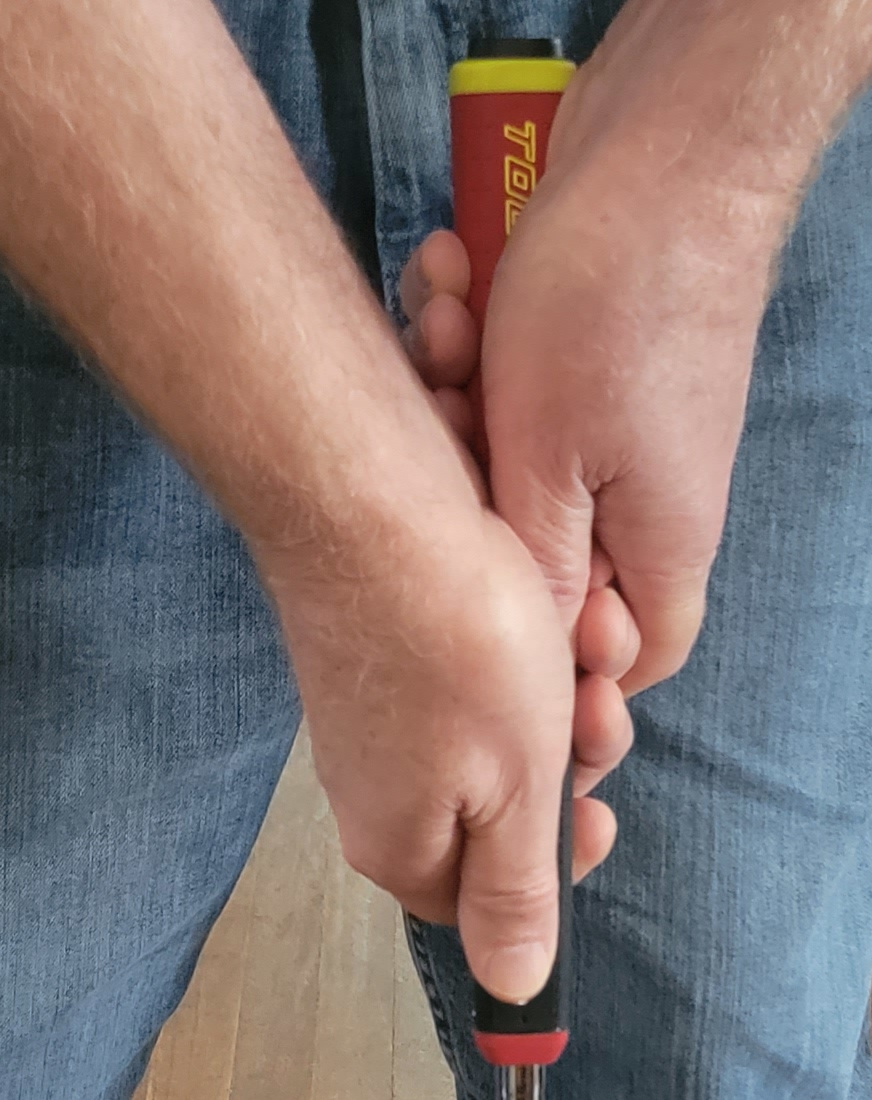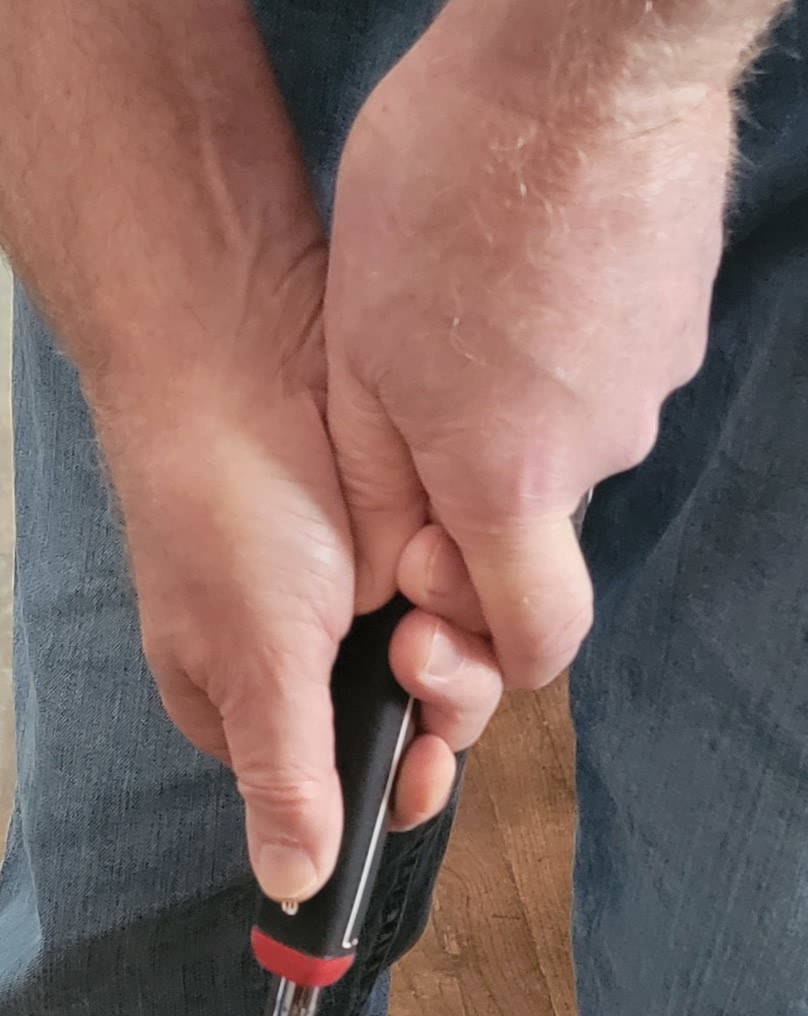Putting basics include the grip, the correct putting setup and consistent putting motion. They are essential techniques for someone who is struggling or just starting out. Practicing the basics never hurts regardless of skill level.
I constantly go over basics. Even to the point of taking photos of my grip, stance, etc.
Why? From time to time I get lax and fall back into bad habits.
Let’s go over the basics one by one.
Grip
Changing my grip from left hand low to the reverse overlap grip made a huge difference. Many pro players use the reverse overlap grip.

Holding the putter mostly with my fingers

Index finger over lead hand fingers
When describing the correct feel for the reverse overlap grip, Brad Faxon said it is like playing a clarinet. Each finger plays a note.
Video: Brad Faxon – Grip
Video: Brad Faxon – Grip Pressure
This next video describes it a little differently using a much larger grip.
Video: John Stahlschmidt – Reverse Overlap
The reverse overlap grip helps you stop being “wristy” when putting.
The are quite a few other putting grips being used. Here are some examples of other techniques.
I’ve tried several and settled on the reverse overlap.
Setup
This is another one of the critical putting basics. It’s also one I have to constantly pay attention to myself.
My feet are shoulder width apart at setup or approximately two putter heads wide.
I use a two plane setup involving the club and my arms.
In other words, the club and my forearms are on the same plane. My upper arms are on a different plane.
Elbows are held lightly into my sides and I balance over my feet in an athletic posture.
My setup ball position is off my left heel.
Everyone has a spot somewhere between there feet where they will hit the perfect putt. Mine is well left of center.
Video – John Stahlschmidt – Setup
Stroke
Gauging your backstroke length gives you a benchmark for putts of a given distance.
Using your stance for backstroke and forward stroke length is a great way to measure.
I set the putter down with the heel up slightly, bounce the club up and down, forward press and make the putt.
Note: There are videos below about Brad Faxon and Steve Stricker that explain or demonstrate that in more depth.
If you play your ball in the middle of your stance, you may want to watch the following video.
Video – John Stahlschmidt – Stroke
Conclusion
I used to putt with my full swing interlocking grip. Then later I changed that to left hand low.
Playing the ball in the middle of my stance only worked sporadically.
Trying to master a straight back and straight thru stroke required manipulation that caused inconsistency.
The pace and direction of my putts was not good. I frequently left the ball out to the right.
I needed to change.
Those changes over the last two winters improved my putting metrics and stats significantly.
Switching the ball position to off my left heel, keeping my shoulders square and using the reverse overlap grip made a remarkable change in my putting.
In addition, I’ve spent a lot of time on rolling the ball past the hole. If you don’t get it there, it’s not going in.
I tracked and charted more than 5,500 putts over the last two winters. (Note: I started charting putts with an Excel spreadsheet. Blast Motion Golf’s players report does this for you. Requires a Blast Connect subscription.)
For me, putting has become a year round challenge to be more consistent and confident.
I’ve listed the videos below because I sort of have a Brad Faxon / Steve Stricker putting setup and stroke.
There are lots of great videos out there by or about Brad Faxon and Steve Stricker. Here are a few.
Brad Faxon – Putting Instruction (Part 1)
